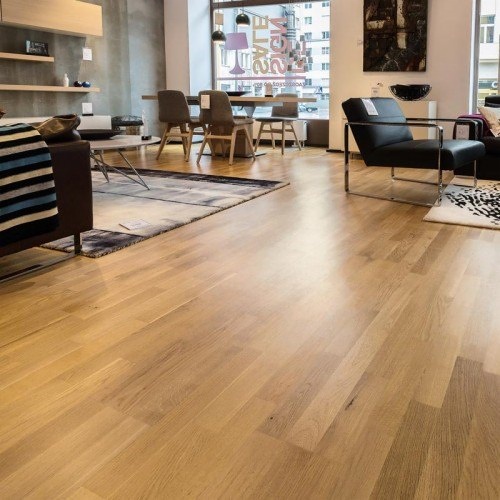
4 common problems in the cleaning and maintenance of LVT elastic floor
Nowadays, more and more customers consider using LVT elastic floor as a floor material for interior decoration. One of the biggest benefits is its easy-to-clean and easy-to-maintain characteristics. This feature not only allows users to enjoy the long-term durability and stability of the floor, but also brings a lasting beautiful and comfortable feeling. However, how to clean LVT vinyl flooring to ensure that it is durable during the warranty period is not a simple question. In order to ensure that the floor you choose is well protected in the next few years, you should have a clear understanding of the maintenance of LVT elastic floor. Here we enumerate 4 common problems in the maintenance of LVT elastic flooring.

1. Do I need to wax the LVT elastic floor?
No need. This is very important, LVT elastic floor does not need to be waxed, but proper use of floor polish can play a good maintenance role. There is a big difference between the two. Floor wax generally comes from carnauba wax, which requires special polishing equipment each time it is used. In general, VCT floors in schools and hospitals often use wax for maintenance, so that the floors look neat and shiny. The floor polish is a more liquid-based material and can be used with mops and buckets. This is different from wax, which is more solid and needs to be polished on the floor surface. For surfaces that are prone to abrasion or scratches, the manufacturer recommends the use of polishes. Although this is not a hard requirement, if used properly, floor polishes can provide a protective barrier and improve the gloss and service life of the floor.
2. Do I need to use a high-speed polisher on the floor polish to improve gloss?
No need. High-speed polishing will cause the wear-resistant layer to penetrate into the core layer of the floor and damage the floor. High-speed polishing can also cause the layers of the floor to separate, leading to delamination. It is recommended that you polish the floor slowly on the LVT elastic floor to improve the gloss.
3. What should I do when scratches or wear appear on the floor?
Use a dry mop, broom, or use a vacuum cleaner to clean the debris or grit on the floor surface to avoid surface scratches. If there have been scratches or wear, you can lightly polish and the floor will look as clean as new. Other simple fixes include:
Use lacquer or elastic floor sealer (after cleaning) to hide most small to medium wear. The stain repair tool is also very useful.
If the scratches are deep (such as grooves, cuts, or dents), it is better to replace the floor. This process is relatively simple. Wear is similar to deep scratches, because anything that causes wear (shoes, chairs, carts, etc.) may generate heat transfer and damage the wear layer. Other solutions include sticking a tennis ball on the top of the wooden stick, wiping wear marks, or using rubber pads to wipe the worn areas. Deep wear marks that damage the wear layer can be treated with a floor polish. If used properly, it will help minimize visible damage.
4. Does LVT resilient floor help hide dirt or wear?
When dealing with dirt, it is best to promptly and quickly. Therefore, we suggest that LVT elastic flooring can be used in heavily polluted areas with high traffic. The pattern of the high-grade elastic floor has a variety of tones or textures, which can well hide the footprints, scratches or dust of pedestrians. Of course, the use of light-colored floors will also have the problem of letting dirt have nowhere to hide, but please remember that spills or dirt on the LVT floor can be easily wiped off.
The important thing to remember is that like all other hard floor products, high-grade resilient flooring is susceptible to normal wear and tear, especially in areas with high traffic. However, unlike many other current flooring products, high-grade elastic flooring is easy to clean for spills, stains, abrasion or scratches. The key is to rely on the high-quality paint that protects the floor and follow the daily maintenance recommendations to find ways to minimize damage.




